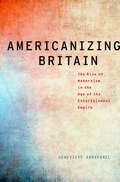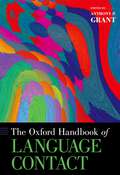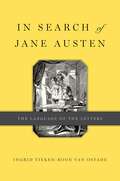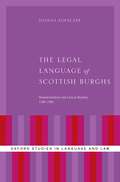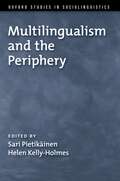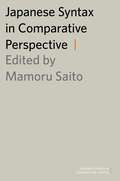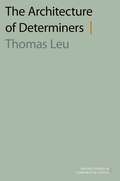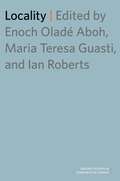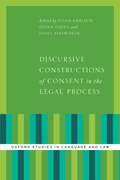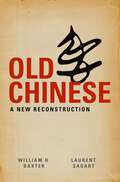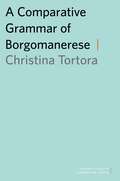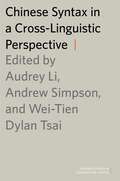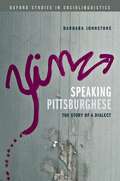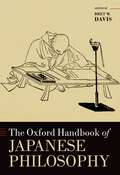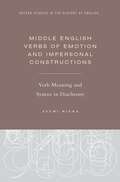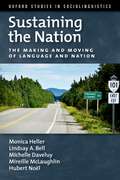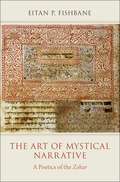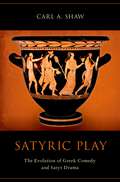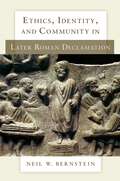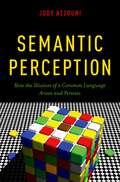- Table View
- List View
Americanizing Britain: The Rise of Modernism in the Age of the Entertainment Empire (Modernist Literature and Culture)
by Genevieve AbravanelHow did Great Britain, which entered the twentieth century as a dominant empire, reinvent itself in reaction to its fears and fantasies about the United States? Investigating the anxieties caused by the invasion of American culture-from jazz to Ford motorcars to Hollywood films-during the first half of the twentieth century, Genevieve Abravanel theorizes the rise of the American Entertainment Empire as a new style of imperialism that threatened Britain's own. In the early twentieth century, the United States excited a range of utopian and dystopian energies in Britain. Authors who might ordinarily seem to have little in common-H.G. Wells, Aldous Huxley, and Virginia Woolf-began to imagine Britain's future through America. Abravanel explores how these novelists fashioned transatlantic fictions as a response to the encroaching presence of Uncle Sam. She then turns her attention to the arrival of jazz after World War I, showing how a range of writers, from Elizabeth Bowen to W.H. Auden, deployed the new music as a metaphor for the modernization of England. The global phenomenon of Hollywood film proved even more menacing than the jazz craze, prompting nostalgia for English folk culture and a lament for Britain's literary heritage. Abravanel then refracts British debates about America through the writing of two key cultural critics: F.R. Leavis and T.S. Eliot. In so doing, she demonstrates the interdependencies of some of the most cherished categories of literary study-language, nation, and artistic value-by situating the high-low debates within a transatlantic framework.
The Oxford Handbook of Language Contact (Oxford Handbooks)
Every language has been influenced in some way by other languages. In many cases, this influence is reflected in words which have been absorbed from other languages as the names for newer items or ideas, such as perestroika, manga, or intifada (from Russian, Japanese, and Arabic respectively). In other cases, the influence of other languages goes deeper, and includes the addition of new sounds, grammatical forms, and idioms to the pre-existing language. For example, English's structure has been shaped in such a way by the effects of Norse, French, Latin, and Celtic--though English is not alone in its openness to these influences. Any features can potentially be transferred from one language to another if the sociolinguistic and structural circumstances allow for it. Further, new languages--pidgins, creoles, and mixed languages--can come into being as the result of language contact. In thirty-three chapters, The Oxford Handbook of Language Contact examines the various forms of contact-induced linguistic change and the levels of language which have provided instances of these influences. In addition, it provides accounts of how language contact has affected some twenty languages, spoken and signed, from all parts of the world. Chapters are written by experts and native-speakers from years of research and fieldwork. Ultimately, this Handbook provides an authoritative account of the possibilities and products of contact-induced linguistic change.
In Search of Jane Austen: The Language of the Letters
by Ingrid Tieken-Boon van OstadeAlong with Shakespeare, Jane Austen (1775-1817) can be said to be the most widely studied author in the history of English literature. But unlike Shakespeare, her language has received little scholarly attention. This is especially true for the language of her letters. Jane Austen's letters, mostly addressed to her sister Cassandra but to various other people as well, have been described as the equivalent of telephone conversations, and if you read them, you can almost hear her speak. We do not have access to actual speech from the time in which she lived, but the letters take us as close to the spoken language of the period as you might hope to get. They are therefore a veritable linguistic goldmine. This study, for the first time, offers a detailed sociolinguistic account of all aspects of the language of her letters: spelling, vocabulary and grammar. It also produces some evidence of pronunciation as well as of local dialectal usage. The analysis shows Jane Austen to be rather idiosyncratic in her language use: she was consistent in her spelling (though she had unusual spelling preferences), not very innovative in her vocabulary (though she did coin a few new words), and not quite representative of grammatical developments of the times (though her usage differed depending on who she wrote to, her sister, her publisher or her nieces and nephews). This study of Jane Austen's private language use shows the extent to which she varied in her language use, just like any of us do today, while is also provides evidence both for a date of her unfinished novel The Watsons (for the first time on linguistic grounds) and for the interplay there must have been between the editors of her novels and her own linguistic preferences, in the field of spelling and otherwise.
The Legal Language of Scottish Burghs: Standardization and Lexical Bundles (1380-1560) (Oxford Studies in Language and Law)
by Joanna KopaczykThis book offers an innovative, corpus-driven approach to historical legal discourse. It is the first monograph to examine textual standardization patterns in legal and administrative texts on the basis of lexical bundles, drawing on a comprehensive corpus of medieval and early modern legal texts. The book's focus is on legal language in Scotland, where law--with its own nomenclature and its own repertoire of discourse features--was shaped and marked by the concomitant standardizing of the vernacular language, Scots, a sister language to the English of the day. Joanna Kopaczyk's study is based on a unique combination of two methodological frameworks: a rigorous corpus-driven data analysis and a pragmaphilological, context-sensitive qualitative interpretation of the findings. Providing the reader with a rich socio-historical background of legal discourse in medieval and early modern Scottish burghs, Kopaczyk traces the links between orality, community, and law, which are reflected in discourse features and linguistic standardization of legal and administrative texts. In this context, the book also revisits important ingredients of legal language, such as binomials or performatives. Kopaczyk's study is grounded in the functional approach to language and pays particular attention to referential, interpersonal, and textual functions of lexical bundles in the texts. It also establishes a connection between the structure and function of the recurrent patterns, and paves the way for the employment of new methodologies in historical discourse analysis.
Multilingualism and the Periphery (Oxford Studies in Sociolinguistics)
by Sari Pietikainen Helen Kelly-HolmesMultilingualism and the Periphery is an edited volume that explores the ways in which core-periphery dynamics shape multilingualism. The research focuses on peripheral sites, which are defined by a relationship-be it geographic, political, economic etc.-to some perceived centre. Viewing multilingualism through the lens of core-periphery dynamics allows the contributors to highlight language ideological tensions with regard to language boundary-making, language ownership, commodification and authenticity, as well as the ways in which speakers seek novel solutions in adapting their linguistic resources to new situations and thereby develop innovative language practices. Since the core-periphery relationship is never fixed, but instead constantly renegotiated and mutually constitutive, the essays in the volume are particularly concerned with processes of peripheralization and of centralization. The volume includes ten essays by leading scholars in the field, and introductory and concluding remarks by the volume editors.
Japanese Syntax in Comparative Perspective (Oxford Studies in Comparative Syntax)
This book examines the syntax of Japanese in comparison with other Asian languages within the Principles-and-Parameters framework. It grows out of a collaborative research project on comparative syntax pursued at the Center for Linguistics at Nanzan University from 2008-2013, in collaboration with researchers at Tsing Hua (Hsinchu, Taiwan), Connecticut, EFL U. (Hyderabad, India), Siena, and Cambridge. In ten chapters, the book compares the syntax of Japanese to that of Chinese, Korean, Turkish, Hindi, and Malayalam, focusing on ellipsis, movement, and Case. The first three chapters compare nominal structures in Japanese and Chinese and account for the differences between them. An important point of comparison in these chapters is the patterns of N'-ellipsis the two languages exhibit. The subsequent two chapters focus on ellipsis. One examines argument ellipsis in Japanese, Turkish, and Chinese, and argues for its correlation with the absence of
The Architecture of Determiners (Oxford Studies in Comparative Syntax)
by Thomas LeuWork in morphology is typically concerned with productive word formation and regular inflection, in any event with open class categories such as verbs, nouns, and adjectives, and their various forms. The Architecture of Determiners, by contrast, is devoted to a set of function words: the closed class of determiners. While it is traditionally assumed that function words are syntactically atomic, Thomas Leu shows that a comparative perspective on a series of determiners - each insistently vivisected into its minimal morphotactic segments - reveals an anatomy with properties analogous to clausal syntax, including a lexical, an inflectional, and left peripheral layer, as well as transformational relations among subconstituents. Leu argues that determiners are extended adjectival projections with a closed class minimal stem. Leu focuses on Swiss German and German, using other Germanic and non-Germanic languages as a comparative domain. His discussion of the internal structure of determiners includes demonstratives (ch.2), distributive quantifiers (ch.4), possessive and negative determiners (ch.5), and interrogative determiners such as 'was für' (ch.6). His main claim - that all of these involve extended adjectival projections - connects naturally to a discussion of adjectival / determiner inflection in German. Chapter 3 addresses the oft-debated strong versus weak agreement alternation in a novel way, proposing that the adjective moves within its own extended projection, in a way akin to verb movement to C in the clause. This accounts for the central facts of nominative and accusative inflection. Chapter 7, then, addresses dative and genitive morphology, setting them syntactically apart from adjectival / determiner inflection in a way that leads to a surprising account of most of the systematic (meta-) syncretism patterns in German adjectival inflection.
Locality (Oxford Studies in Comparative Syntax)
by Enoch Oladé Aboh Maria Teresa Guasti Ian RobertsLocality is a key concept not only in linguistic theorizing, but in explaining pattern of acquisition and patterns of recovery in garden path sentences, as well. If syntax relates sound and meaning over an infinite domain, syntactic dependencies and operations must be restricted in such a way to apply over limited, finite domains in order to be detectable at all (although of course they may be allowed to iterate indefinitely). The theory of what these finite domains are and how they relate to the fundamentally unbounded nature of syntax is the theory of locality. The papers in this collection all deal with the concept of locality in syntactic theory, and, more specifically, describe and analyze the various contributions Luigi Rizzi has made to this area over the past three and a half decades. The authors are all eminent linguists in generative syntax who have collaborated with Rizzi closely, and in eleven chapters, they explore locality in both pure syntax and psycholinguistics. This collection is essential reading for students and scholars of linguistic theory, generative syntax, and comparative syntax.
Discursive Constructions of Consent in the Legal Process (Oxford Studies in Language and Law)
As a linguistically-grounded, critical examination of consent, this volume views consent not as an individual mental state or act but as a process that is interactionally-and discursively-situated. It highlights the ways in which legal consent is often fictional (at best) due to the impoverished view of meaning and the linguistic ideologies that typically inform interpretations and representations in the legal system. The authors are experts in linguistics and law, who use diverse theoretical and analytical approaches to examine the complex ways in which language is used to seek, negotiate, give, or withhold consent in a range of legal contexts. Authors draw on case studies, or larger research corpora or a wider sociolegal approach, in investigations of: police-citizen interactions in the street, police interviews with suspects, police call handlers, rape and abduction trials, interactions with lay litigants in a multilingual small claims court, a restorative justice sentencing scheme for young offenders, biomedical research, and legal disputes over contracts.
Old Chinese: A New Reconstruction
by William H. Baxter Laurent SagartThis book introduces a new linguistic reconstruction of the phonology, morphology, and lexicon of Old Chinese, the first Sino-Tibetan language to be reduced to writing. Old Chinese is the language of the earliest Chinese classical texts (1st millennium BCE) and the ancestor of later varieties of Chinese, including all modern Chinese dialects. William Baxter and Laurent Sagart's new reconstruction of Old Chinese moves beyond earlier reconstructions by taking into account important new evidence that has recently become available: better documentation of Chinese dialects that preserve archaic features, such as the Min and Waxiang dialects; better documentation of languages with very early loanwords from Chinese, such as the Hmong-Mien, Tai-Kadai and Vietnamese languages; and a flood of Chinese manuscripts from the first millennium BCE, excavated or discovered in the last several decades. Baxter and Sagart also incorporate recent advances in our understanding of the derivational processes that connect different words that have the same root. They expand our knowledge of Chinese etymology and identify, for the first time, phonological markers of pre-Han dialects, such as the development of *r to -j in a group of east coast dialects, but to -n elsewhere. The most up-to-date reconstruction available, Old Chinese: A New Reconstruction brings the methodology of Old Chinese reconstruction closer to that of comparative reconstructions that have been used successfully in other language families. It is critical reading for anyone seeking an advanced understanding of Old Chinese.
A Comparative Grammar of Borgomanerese (Oxford Studies in Comparative Syntax)
by Christina TortoraThis book presents and analyzes various features of the morphosyntax of Borgomanerese, a Gallo-Italic dialect spoken in the town of Borgomanero, in the Piedmont region of Northern Italy. The study is highly comparative, drawing on the literature on numerous other Italian dialects and Romance languages (as well as English), to inform our understanding of the Borgomanerese phenomena. Christina Tortora takes the many unusual and understudied (and often novel) facts of Borgomanerese grammar as compelling grounds for revisiting and reformulating current analyses of syntactic phenomena in these other languages. The phenomena treated include the syntax and semantics of the weak locative in presentational sentences; the syntax of object clitics and argument prepositions; the syntax of subjects and subject clitics; the syntax of interrogatives; clausal architecture; and the relationship between orthography and theoretical analysis. The principal value of this book lies both in the rich description of the morphosyntactic phenomena of Borgomanerese, many of which have not been previously reported in the literature, and in the consequent novel analyses developed, which contribute insights for other languages and dialects, and advance our understanding of syntax and syntactic theory in general.
Chinese Syntax in a Cross-Linguistic Perspective (Oxford Studies in Comparative Syntax)
by Wei-Tien Dylan TsaiChinese Syntax in a Cross-linguistic Perspective is a collection of sixteen original papers by leading experts in Chinese syntax. The papers focus on a broad range of topics, demonstrating how the analysis of Chinese can inform our understanding of syntactic phenomena in other languages, and how insights gained in the study of other languages can in turn shed interesting new light on patterns in Chinese. Each chapter compares a specific major phenomenon in Chinese syntax with related patterns in at least one other language from Asia, Europe, North America or Africa, resulting in a series of fresh perspectives on Chinese and what the study of Chinese can offer linguists working on other, genetically unrelated languages. The volume is divided into three thematic sections, on the nominal domain, the predicate domain, and the C-domain. In addition to chapters on synchronic, adult syntax, the book includes chapters on Chinese diachronic syntax in a comparative perspective and the acquisition of syntax in Chinese, in comparison with that of other languages. The collection is a tribute to Professor C.-T. James Huang's lifelong work on the syntax of Chinese and his attempts to demonstrate how the comparative analysis of Chinese reveals important properties of Universal Grammar. With its broad, cross-linguistic focus and its detailed, new studies of Chinese, this book is essential reading for researchers of all language backgrounds in modern generative syntax.
Speaking Pittsburghese: The Story of a Dialect (Oxford Studies in Sociolinguistics)
by Barbara JohnstoneThis book explores the history of Pittsburghese, the language of the Pittsburgh, Pennsylvania area as it is imagined and used by Pittsburghers. Pittburghese is linked to local identity so strongly that it is alluded to almost every time people talk about what Pittsburgh is like, or what it means to be a Pittsburgher. But what happened during the second half of the 20th century to reshape a largely unnoticed way of speaking into this highly visible urban "dialect"? In this book, sociolinguist Barbara Johnstone focuses on this question. Treating Pittsburghese as a cultural product of talk, writing, and other forms of social practice, Johnstone shows how non-standard pronunciations, words, and bits of grammar used in the Pittsburgh area were taken up into a repertoire of words and phrases and a vocal style that has become one of the most resonant symbols of local identity in the United States today.
The Oxford Handbook of Japanese Philosophy (Oxford Handbooks)
Japanese philosophy is now a flourishing field with thriving societies, journals, and conferences dedicated to it around the world, made possible by an ever-increasing library of translations, books, and articles. The Oxford Handbook of Japanese Philosophy is a foundation-laying reference work that covers, in detail and depth, the entire span of this philosophical tradition, from ancient times to the present. It introduces and examines the most important topics, figures, schools, and texts from the history of philosophical thinking in premodern and modern Japan. Each chapter, written by a leading scholar in the field, clearly elucidates and critically engages with its topic in a manner that demonstrates its contemporary philosophical relevance. The Handbook opens with an extensive introductory chapter that addresses the multifaceted question, "What is Japanese Philosophy?" The first fourteen chapters cover the premodern history of Japanese philosophy, with sections dedicated to Shinto and the Synthetic Nature of Japanese Philosophical Thought, Philosophies of Japanese Buddhism, and Philosophies of Japanese Confucianism and Bushido. Next, seventeen chapters are devoted to Modern Japanese Philosophies. After a chapter on the initial encounter with and appropriation of Western philosophy in the late nineteenth-century, this large section is divided into one subsection on the most well-known group of twentieth-century Japanese philosophers, The Kyoto School, and a second subsection on the no less significant array of Other Modern Japanese Philosophies. Rounding out the volume is a section on Pervasive Topics in Japanese Philosophical Thought, which covers areas such as philosophy of language, philosophy of nature, ethics, and aesthetics, spanning a range of schools and time periods. This volume will be an invaluable resource specifically to students and scholars of Japanese philosophy, as well as more generally to those interested in Asian and comparative philosophy and East Asian studies.
Middle English Verbs of Emotion and Impersonal Constructions: Verb Meaning and Syntax in Diachrony (Oxford Studies in the History of English)
by Ayumi MiuraImpersonal constructions in the history of English form a puzzling category, in that there has been uncertainty as to why some verbs are attested in such constructions while others are not, even though they look almost synonymous. In this book, Ayumi Miura tackles this under-discussed question with special reference to verbs of emotion in Middle English. Through a careful study of the behaviour of impersonal and near-synonymous non-impersonal verbs, she identifies the factors that determined the presence, absence, and spread of impersonal usage with the verbs concerned. Miura utilizes modern linguistic approaches, including theories and methodologies adopted in the study of psych-verbs in modern languages, which bear close relevance to impersonal verbs of emotion but have traditionally been researched separately. She also draws on categorizations in the Historical Thesaurus of the Oxford English Dictionary and harnesses the online Middle English Dictionary in a novel way, demonstrating that dictionary materials are in fact a valuable tool in the study of early English syntax and semantics. Miura concludes that a range of factors - such as causation, transitivity, animacy of the target of emotion, and duration of the emotion - influenced the choice of impersonal constructions with Middle English verbs of emotion. We can therefore make reasonable generalizations about when impersonal usage was licensed in these verbs. This careful analysis of the correlation between Middle English verbs of emotion and use or non-use in impersonal constructions represents a new empirical and theoretical contribution to the busy research area of impersonal constructions in the history of English.
Sustaining the Nation: The Making and Moving of Language and Nation (Oxford Studies in Sociolinguistics)
by Monica Heller Lindsay A. Bell Michelle Daveluy Mireille McLaughlin Hubert NoëlThis book is an ethnography of labor mobility and its challenges to the idea of the nation. Using the example of francophone Canada, it examines how social difference-race, ethnicity, language, gender-has been used to sort out who must (or can) be mobile and who must (or can) remain in place in the organization of global circulation of human and natural resources. It argues that "francophone Canada" can best be understood as an ethnoclass category that has embedded francophones into specific forms of labor mobility since the beginnings of European colonization, even as their social difference has been constructed as national in the interests of gaining political power. The result has been an erasure both of francophone mobilities and of their contribution to the rooted community that lies at the heart of the idea of the nation, and of francophone capacity to resist economic marginalization and exploitation. By following French Canadian workers back and forth between eastern and central Canada and the frontiers of the Canadian northwest, Sustaining the Nation explores how contemporary forms of labor mobility make it increasingly difficult for national structures and discourses to produce the francophone nation. By following the ideological tensions between language as a skill and language as a marker of belonging, the authors present grounded evidence of how the globalized new economy challenges the nation-state, and how mobilities and immobilities are co-constructed.
The Art of Mystical Narrative: A Poetics of the Zohar
by Eitan P. FishbaneIn the study of Judaism, the Zohar has captivated the minds of interpreters for over seven centuries, and continues to entrance readers in contemporary times. Yet despite these centuries of study, very little attention has been devoted to the literary dimensions of the text, or to formal appreciation of its status as one of the great works of religious literature. The Art of Mystical Narrative offers a critical approach to the zoharic story, seeking to explore the interplay between fictional discourse and mystical exegesis. Eitan Fishbane argues that the narrative must be understood first and foremost as a work of the fictional imagination, a representation of a world and reality invented by the thirteenth-century authors of the text. He claims that the text functions as a kind of dramatic literature, one in which the power of revealing mystical secrets is demonstrated and performed for the reading audience. The Art of Mystical Narrative offers a fresh, interdisciplinary perspective on the Zohar and on the intersections of literary and religious studies.
Satyric Play: The Evolution of Greek Comedy and Satyr Drama
by Carl ShawSatyric Play is the first book to offer an integrated analysis of Greek comedy and satyr drama. Using a literary-historical approach, Carl A. Shaw argues that comedy and satyr plays influenced each other in nearly all stages of their development. Although satyr drama was written by tragedians and employed a number of formal tragic elements, the humorous chorus of half-man, half-horse satyrs encouraged sustained interaction between poets of comedy and satyr play. From sixth-century proto-drama, through classical productions staged at the Athenian City Dionysia, to bookish Alexandrian plays of the third-century, the remains of comic and satyric performances reveal a range of literary, aesthetic, historical, religious, and geographical connections. Shaw analyzes the details of this interplay diachronically, looking at a wide range of literary and material evidence. He shows that ancient critics and poets allude to comic-satyric associations in surprising ways, vases depict fascinating performative connections, and the plays themselves share titles, plots, modes of humor, and occasionally even a chorus of satyrs. Satyric Play uncovers and examines the complex, shifting relationship between comedy and satyr drama, offering insight into the development of these genres and the Greek theatrical experience as a whole.
Cervantes' Don Quixote: A Casebook (Casebooks in Criticism)
This casebook gathers a collection of ambitious essays about both parts of the novel (1605 and 1615) and also provides a general introduction and a bibliography. The essays range from Ramón Menéndez Pidal's seminal study of how Cervantes dealt with chivalric literature to Erich Auerbachs polemical study of Don Quixote as essentially a comic book by studying its mixture of styles, and include Leo Spitzer's masterful probe into the essential ambiguity of the novel through minute linguistic analysis of Cervantes' prose. The book includes pieces by other major Cervantes scholars, such as Manuel Durán and Edward C. Riley, as well as younger scholars like Georgina Dopico Black. All these essays ultimately seek to discover that which is peculiarly Cervantean in Don Quixote and why it is considered to be the first modern novel.
Ethics, Identity, and Community in Later Roman Declamation
by Neil W. BernsteinRhetorical training was the central component of an elite Roman man's education, and declamations--imaginary courtroom speeches in the character of a fictional or historical individual--were the most advanced exercises in the standard rhetorical curriculum. The Major Declamations is a collection of nineteen full-length Latin speeches attributed in antiquity to Quintilian but most likely composed by a group of authors in the second and third centuries CE. Though there has been a recent revival of interest in Greco-Roman declamation, the Major Declamations has generally been neglected. Ethics, Identity, and Community in Later Roman Declamation is the first book devoted exclusively to the Major Declamations and its reception in later European literature. It argues that the fictional scenarios of the Major Declamations enable the conceptual exploration of a variety of ethical and social issues. Chapters explore these cultural matters, covering, in turn, the construction of authority, the verification of claims, the conventions of reciprocity, and the ethics of spectatorship. The book closes with a study of the reception of the collection by the Renaissance humanist Juan Luis Vives and the eighteenth-century scholar Lorenzo Patarol, followed by a brief postscript that deftly surveys the use of declamatory exercises in the contemporary university. This much-needed and engaging study will rescue the Major Declamations from generations of neglect, while critically informing current work in rhetorical studies.
